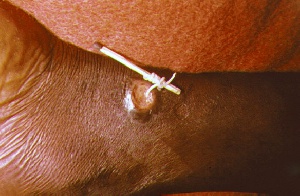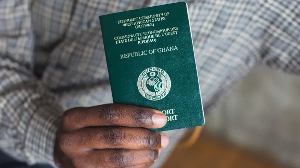Accra, March 27, GNA - Efforts to eradicate guinea worm, a neglected tropical disease that has afflicted people since ancient times, has moved a step closer towards realisation with 12 more countries being declared guinea worm free in early March by the International Commission for the Certification of Dracunculiasis (Guinea Worm Disease) Eradication.
"If progress continues at this rate, in less than two years guinea worm could become the second disease after smallpox to be pushed into oblivion," a statement by the World Health Organisation released in Accra on Tuesday said.
The statement said in the early 1980s, an estimated three million people in more than 20 countries were affected by Dracunculiasis, more commonly referred to as guinea worm disease.
"Today, that number has significantly dropped to about 25,000 cases in nine countries. This is the culmination of years of effort by local and international groups to see this disease eradicated," says Dr Lorenzo Savioli, Director of Neglected Tropical Diseases at the World Health Organization.
The statement said since its creation in 1995, the Commission had certified 180 countries as free of Guinea Worm.
"The Commission is now moving closer to its 2009 deadline for the eradication of the disease worldwide"; WHO said. Ghana is one of the few countries still battling with the disease. Guinea worm is endemic in some villages of Sub-Saharan Africa. The worm is spread through contaminated water. The effects of the disease are crippling. Its victims develop large ulcers, usually in the lower leg.
The ulcers swell, at times to the size of a tennis ball, and burst - releasing a spaghetti-like parasitic worm ranging in length from 550 millimetres to 800 millimetres (0.8 meters). Victims experience a pain so excruciating that they say it feels as if their leg is on fire. The searing pain compels people to jump into water, often the community's only source of drinking water, to relieve the pain.
When the infected person immerses the leg in the water; the worms in their leg releases thousands of larvae. The larvae are then ingested by fleas that live in the water. Thus the cycle begins again when a person drinks the water they are in effect drinking the disease. The socio-economic effects of the disease are numerous. The disability caused by the disease is seasonal, usually re-emerging during harvest season in the villages, which is why it is often called "the disease of the empty granary". REA 27 March 07
Health News of Tuesday, 27 March 2007
Source: GNA













